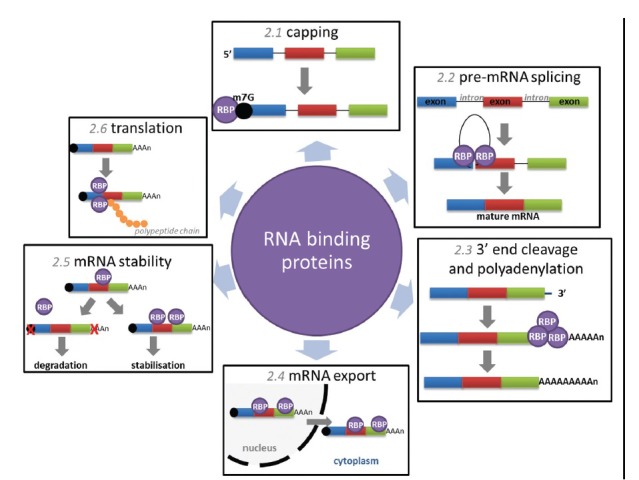Figure 2.

Mechanisms of posttranscriptional control regulated by RNA binding proteins. Capping (section in this article) describes the addition of a 7-methylguanosine to the 5’ end of nascent mRNA, RBPs bind to the cap and promote mRNA stability. Pre-mRNA splicing (section in this article) describes the excision of noncoding introns from nascent mRNA regulated by numerous RBPs within the macromolecular spliceosome. 3’-end cleavage and polyadenylation (section in this article) involves cleavage at a defined site and the 3’-end of fully transcribed pre-mRNA followed by the addition of 150–200 adenosine residues, facilitated by a complex of RBPs. mRNA export (section in this article) refers to the shuttling of mature mRNAs through the nuclear pore complex to the cytoplasm, mediated by the association of RBPs with specific transcripts. MRNA stability (section in this article) can be modulated by transcript associations with specific RBPs, poly(A) tail alterations and decapping often precede rapid degradation. Translation (section in this article) is orchestrated by a complex of RBPs, known as polysomes, RBPs can also modulate translation via exonuclease degradation or sequestering of transcripts in protective cytoplasmic compartments. RBP: RNA binding proteins.
